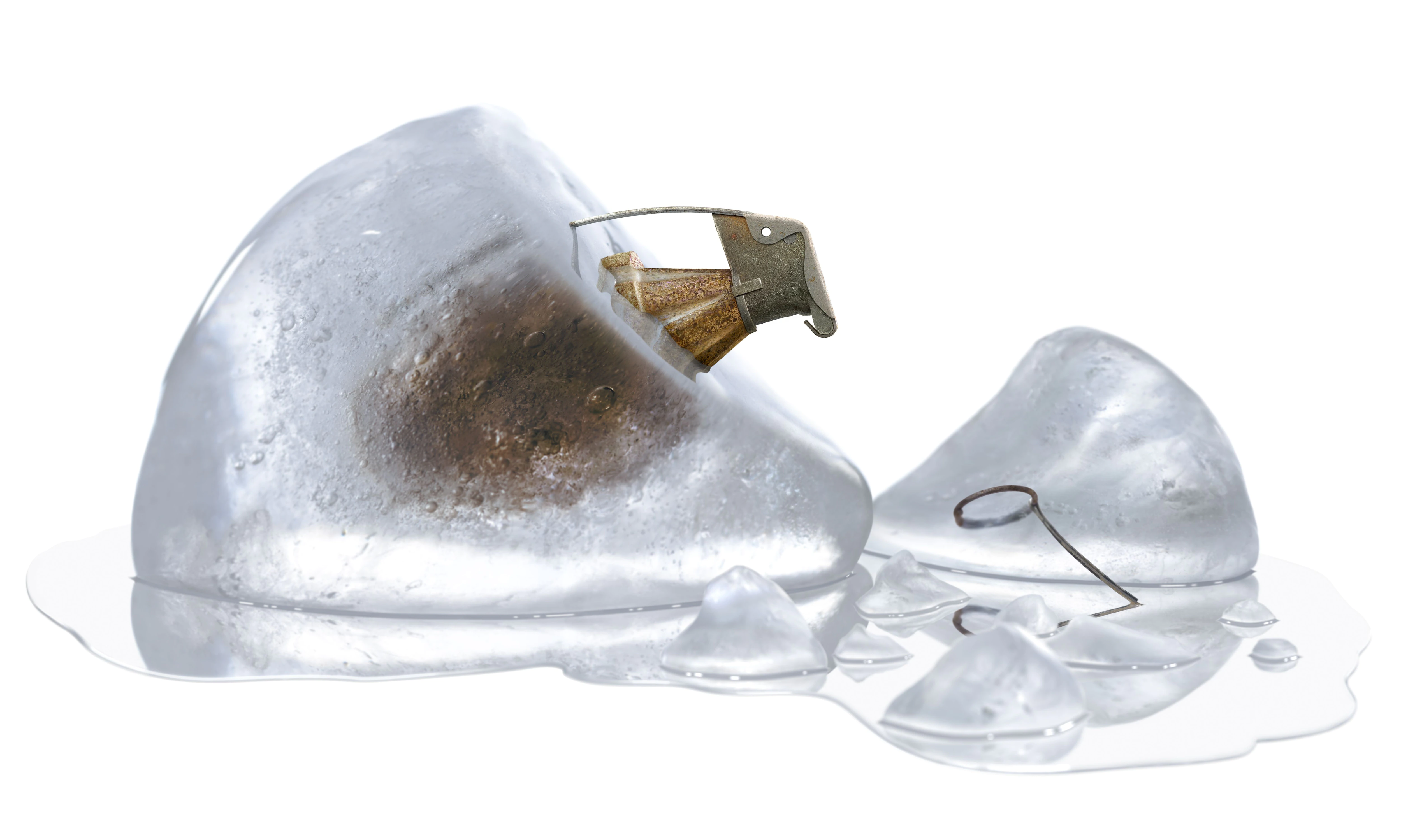Hannah Siegel-Gardner: What’s Next for NFTs?
Imagine getting a phone call from your high school buddy offering you the next-best career opportunity of your life. Sounds too good to be true, right?
That’s exactly what happened with Hannah Siegel-Gardner who first entered the non-fungible token (NFT) space after her high school buddy Erick Calderon called her to join his Ethereum-based NFT project Art Blocks.
“Erick and I went to high school together. So we’ve known each other for a really long time. He’s always been an innovator and creator. I was really curious to see why he thought this [Art Blocks] had legs and where he was going with that.”
Hannah Siegel-Gardner is a speaker at CoinDesk’s Consensus festival April 26-29.
For Siegel-Gardner, Art Blocks was the perfect platform to integrate her diverse professional experiences. She had worked in contemporary arts and with tech firms, which is why this move felt more like a symbiotic integration of her talents. Siegel-Gardner left no stone unturned in understanding the ever-evolving world of NFTs.
“I just had my third baby. And she was, like, nine weeks old. And so I was up a lot at night and that’s when I got my Ph.D. in NFTs. Because I would just read everything I [could] get my hands on,” she told CoinDesk in an interview.
Today, Art Blocks is known as a pioneer in generative art, which takes styles and palettes chosen by artists and then, by using an algorithm, creates a randomized image. Last year the company transacted more than $172 million in primary sales, while total lifetime sales have topped $2 billion.
It took a lot more from Siegel-Gardner’s side to establish a successful company in the crypto world. Think of her and Calderon’s effort as a fusing of centralized rules with decentralized values. They were working towards creating a company culture that is growth-oriented, empathetic and supportive of its employees.
“We’re both honoring the decentralization that’s at the core of what we do, but also having some centralized processes in terms of how we conduct our finances and how we operationalize our company,” she said.
We reached out to Hannah Siegel-Gardner to talk about what makes a crypto firm successful.
This interview has been lightly edited for clarity.
What made you shift to the NFT generative art space? Especially since your background was in traditional media platforms like public radio.
Everybody looks at public media in my background and is, like, “That’s a bold choice!” And I’m, like, “Oh, is that a backhanded compliment?” So, I was the fourth hire at Art Block and I think a good 75% of the Art Block staff would say that a lot of us came to work at the firm because of Eric Calderon, also known as Snowflow.
So Eric called me one day and he had a really compelling vision. He was so excited about this thing that he was calling his passion project, which is kind of a funny way to describe it at this point. And the vision was at the intersection of this interesting work area for me. I have an art background, I’ve worked in contemporary art and I’ve worked in tech, and I never saw this kind of symbiotic relationship come together in the way that he was describing. So that was really interesting to me.
The other parts of this were that Eric and I went to high school together. So we’ve known each other for a really long time. He’s always been an innovator and creator. I was really curious to see why he thought this has legs and, like, where he was going with that. And then I just had my third baby, and she was, like, nine weeks old. And so I was up a lot at night and that’s when I got my Ph.D. in NFTs, because I would just read everything I [could] get my hands on.
And were you nervous making that move?
The other part of this was Eric and I did everything, including my job responsibilities, which at that time were legal, HR, accounting, marketing, very traditional like, Web3 stuff. And so it was really about building for me and I’m really happy. That’s my sweet spot when I’m building. I could really be doing anything. So yeah, it was scary, but also Art Block was already profitable at that point. So to join his startup to capitalize and have a profitable project, it felt like it was a pretty safe bet. And also, I trust Eric.
In your experiences, has marketing ever felt like lying?
Oh, interesting. It has in the past. But now I meet with a lot of big brands that are kind of, like, what is the secret sauce to what Art Blocks is doing? How have you crafted this community? Why are people interested in this project? Like there’s some magic bean that I can hand over, when, candidly, it is all about being honest and transparent, and I’ve never seen anything like it.
This is an audience that can see through the information. They don’t like brands that are recessive to what community is. And for one of the first times in my career, you’re not hiding behind a cell. You’re having to be like a real human with other humans. I love it. It’s demanding because of the freshness, newness and immediacy. But it doesn’t feel like there’s anything to hide.
Coming back to your work at Art Blocks, how much do you think artists are willing to embrace [artificial intelligence] in their work? Do they see it as a collaboration or interference?
So I’m not an expert on AI by any means. I think AI is a tool in the creative process. It can be a tool utilized by artists just like a unique algorithm is used by an artist to make creative content. I’m interested to see what the future holds, like how these tools come together and how people decide what lies in its purpose from an artistic point of view. Personally, I see it as a tool.
What is the most interesting metaphor you can think of to describe Art Blocks?
I think our brand reflects Eric, honestly. I think we’re like nerdy tinkerers that really love building and understanding the next proof of concept. Like, what’s next? Where does this go? How far can this take us?
OK, I’m curious now. What is Erick Calderon aka Snowfro like in person?
I would say one of our core values [at] our company is being humble and having empathy. And he’s a reflection of that. He’s also really enthusiastic and will give you his time, probably to his own detriment, about any topic that’s of interest to you. Like, his full attention and time. A really great example [is] when I started [at] Art Blocks early on, I would email him an idea and I would get a whole dissertation back of how he had thought about it, what might be next steps, where he could see it out in the world. So he’s really thoughtful.
What does it mean to be an “adult” company in the crypto space?
Early on I think we did some fundamental culture building and operational building. And a lot of that was put together by our chief operating officer, who understood that we needed to really pay attention to the regulatory space. That we’re both honoring the decentralization that’s at the core of what we do, but also having some centralized processes in terms of how we conduct our finances and how we operationalize our company.
I think a startup can work where it is super-scrappy, all hands on deck or hair’s on fire all the time. But to retain employees you have to understand that there is a life outside of this company, and have a consistent set of values. So we worked really hard on understanding what our corporate values were and then translating that into actionable steps and pieces of the pie that employees could access. We have three months of maternity and paternity leave. I’ve actually never had that. So I think we formalized some things that we had always probably wanted in our own corporate lives and made them come to life in Art Blocks.
What do you think of Doodle’s attempt at rebranding itself away from NFTs? Would Art Blocks ever make a similar move?
Generative art works on the blockchain. It’s like [a] blockchain-native form of creative expression. Who knows what’s gonna happen? Never say never, but I don’t think media is a next step for us. Like I said, proof of concept and understanding the edges of where this goes is really where our hearts are. And that’s directly tied to creative expression with blockchain.









